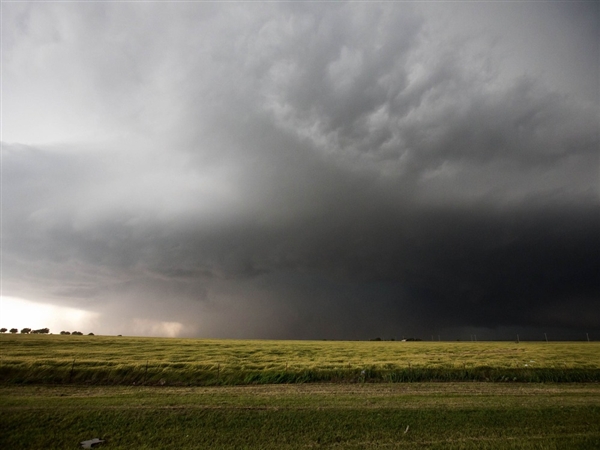The Link Between Climate Change And Tornadoes Is Atmospheric Physics

El Reno, OK EF5 multi-vortex tornado, May 31, 2013. At 2.6 miles wide, the widest ever recorded in the United States.
- “No evidence global warming spawned twister” — CNN’s Elizabeth Landau
- “No links to tornadoes” — Dr. Marshall Shepherd, American Meteorological Society president
- “Yet a link between climate change and tornado activity has not been established.” — New York Times’ John Schwartz
These claims range from misleading to false.
The link between climate change and tornado activity is atmospheric physics. Tornadic activity is governed by atmospheric and topographical conditions, such as vertical wind shear, humidity, temperature gradients, and geographic contours. The atmospheric conditions are determined by climatic forcings, including greenhouse gas concentrations. Scientists have not established how global warming changes tornado activity, but it is simply incorrect to state that there is no link between climate change and tornadoes. To make that claim requires the assumption that the laws of physics do not apply to tornadoes.
There is strong science about climate change and large storms. In particular, there is both theoretical and observational evidence that intense precipitation events are increasing. For example:- Trends in Intense Precipitation in the Climate Record (Groisman et al., 2005)
- Human contribution to more-intense precipitation extremes (Min et al., 2011)
- Climate Extremes: Observations, Modeling, and Impacts (Easterling et al., 2000)
- Atmospheric Warming and the Amplification of Precipitation Extremes (Allen & Snowden, 2008)
- Heavy precipitation processes in a warmer climate (Frei et al., 1998)
- Global surface temperatures and the atmospheric electrical circuit (Price, 1993)
- Possible implications of global climate change on global lightning distributions and frequencies (Price & Rind, 1994)
- Lightning activity as an indicator of climate change (Reeve & Toumi, 1999)
- Thunderstorms, Lightning and Climate Change (Price, 2009)
- Changes in severe thunderstorm environment frequency during the 21st century caused by anthropogenically enhanced global radiative forcing (Trapp et al., 2007)
- Will moist convection be stronger in a warmer climate? (Del Genio et al., 2007)
- Transient response of severe thunderstorm forcing to elevated greenhouse gas concentrations (Trapp et al., 2009)
There are many questions that are open areas of study, including how storm seasons and geography may be shifting, but that thunderstorms are powered by latent and thermal heat is something that has been understood since the 19th century (see Espy, 1841, Philosophy of Storms).